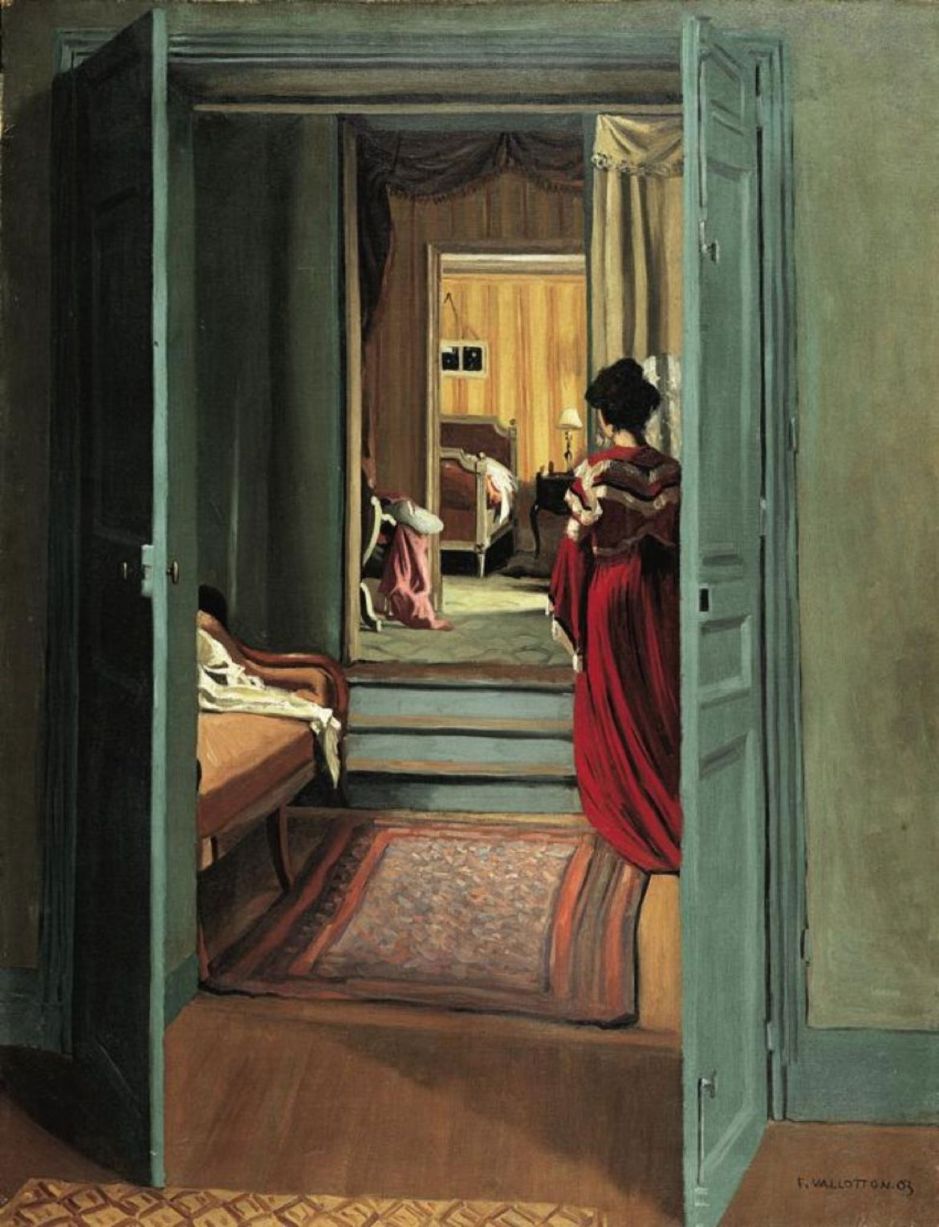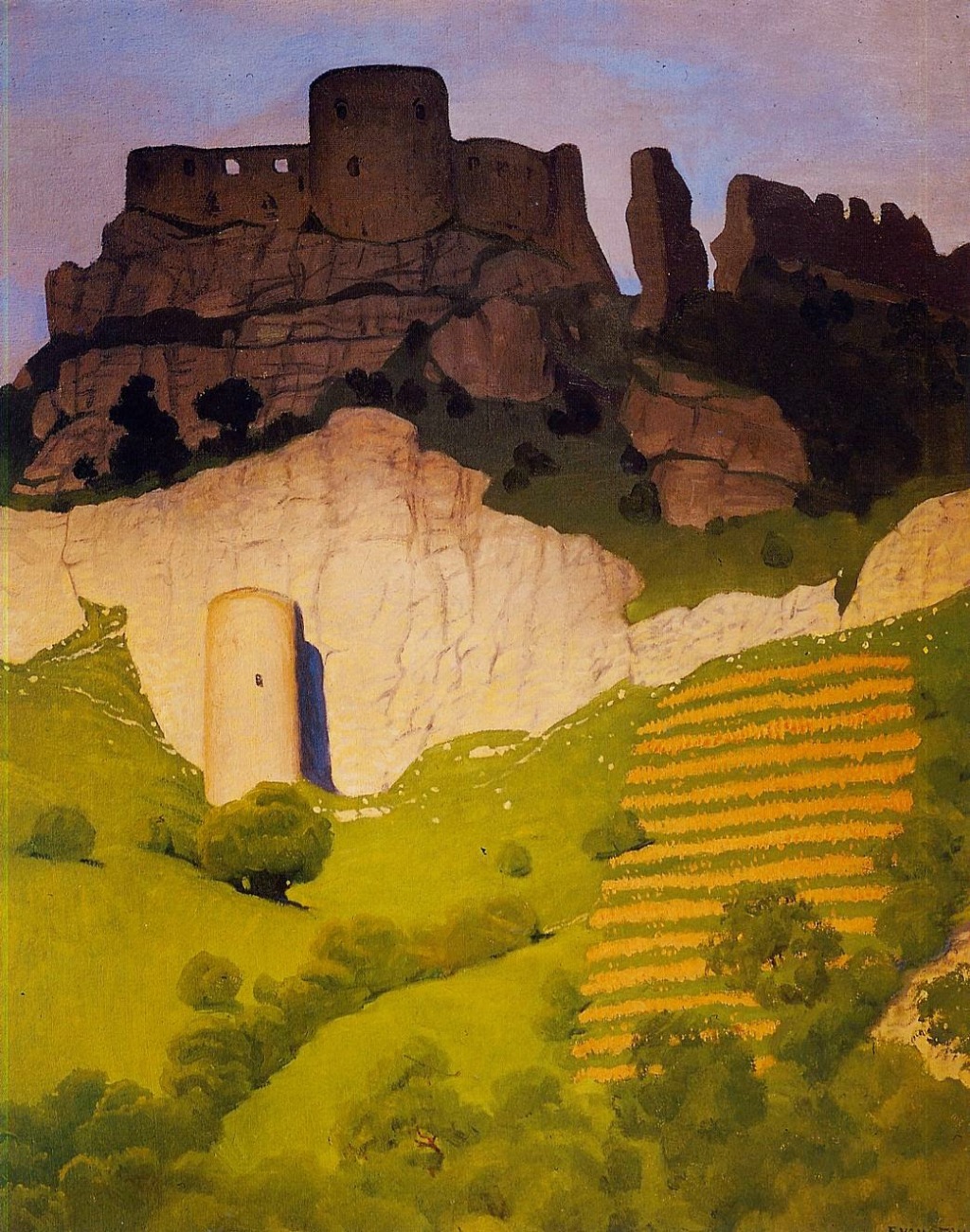In the last article in this series, I looked at the later work of four of the Nabis who perhaps ‘kept the faith’ most in their subsequent art. In this, the penultimate article in this series, I look at five who changed more radically.

Ker-Xavier Roussel’s Nabi works were quite conformist, as shown in this wonderfully-textured painting of Conversation from 1891-93.

His mature work is much higher in chroma, and uses a skilful combination of assembled – even constructive – brushstrokes and detail. His pastels are particularly brilliant, such as this amusing narrative painting of Old Silenus on a Donkey, which he painted in 1925-27. Despite his relinquishing Nabi style, he remained close to Vuillard and Bonnard, and worked with them on joint projects such as decorating the art museum in Wintertur, and private villas. At the time that he was working on this pastel, he became the second recipient of the Carnegie Prize.

Félix Vallotton showed early signs of a rich range of styles, even before 1895 in paintings such as Waltz (1893). Although this sprinkling of multi-coloured dots was hardly in keeping with what other Nabis were doing at this time, it indicated his more eclectic approach.

By the turn of the century, Vallotton was painting enigmatic scenes such as this Interior with the Back of a Woman in Red from 1903. His style became more realist, although today it compares more with works from half a century later.

Vallotton then painted a series of narrative works, including his Perseus Killing the Dragon, from 1910, which adopted a similar style for their very contemporary interpretations of classical myths.

He then became a major war artist for the period of the First World War, capturing some of its most moving images, such as this view of Châlons War Cemetery from 1917. In his final years, like so many great painters, he returned to landscapes of profound serenity and timelessness.

Paul Ranson had conformed to the Nabi style, as seen in his Four Women at a Fountain from 1895.

Ranson’s subsequent career was cut short by his early death, but prior to that he too embraced a more conventional realism. In the year before his death, and with the support of several of the other Nabis, he and his wife Marie-France established the Académie Ranson to teach artists Nabi concepts and techniques.
Although he died in 1909, his Academy survived the First World War. In 1931, his widow handed its management over to Harriet Von Tschudi Cérésole who even kept the school open, in reduced circumstances, during the Second World War. It finally closed its doors in 1955. During its early years, its teaching was supported by most of the Nabis who remained in Paris, including Denis, Sérusier, Roussel, Vallotton and Vuillard.

For all his reputation as a sculptor, Georges Lacombe’s paintings compared favourably to those of the other Nabis, and conformed with their common style, as shown in his painting of Chestnut Gatherers from 1893-94.

Lacombe later embraced Japonisme, being influenced by the popular Hokusai print of The Great Wave, and was possibly the most chromatically intense of all the Nabis who remained working in France, as shown in his late painting of Paul Ranson on the Grounds from 1905-08. This is closest in style to the later works of Pierre Bonnard. However, Lacombe’s career was cut short by tuberculosis, and he died from that in 1916, at the age of only 48.
By far the most radical development in painting style came from the Hungarian Nabi, József Rippl-Rónai, who neither seems to have been particularly close to the centre of the group, nor does he appear to have painted in conformity with other Nabis.

Following his return to Hungary, he developed what is known in Hungarian as kukoricásnak, or ‘corn style’, with dazzlingly high chroma and coalescent tiles of paint which appears to have been derived from Post-Impressionism, and makes his works shimmer.
In the early twentieth century, the former Nabis diverged into the rich mixture of styles and movements which were to characterise (better) painting during the rest of the century. In this sense, the story of the Nabis is in microcosm the story of art over the following hundred years. What I find most unusual about them is their convergence on a set of artistic and aesthetic ideals which enabled each of them to go on to more individual expression. For that, they surely merit a more prominent place in art history.

